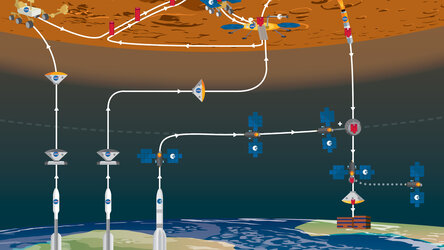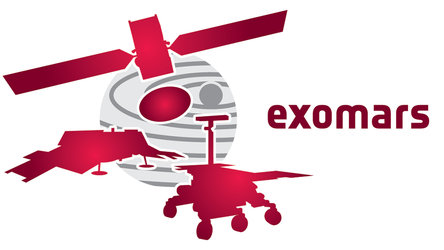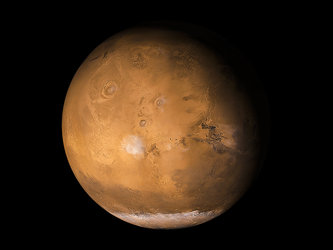Mars sample return
Missions to Mars have made many exciting discoveries that have transformed our understanding of the planet, but the next step is to bring samples to Earth for detailed analysis in sophisticated laboratories.
Orbiters, landers and rovers sent to Mars carry compact equipment and instruments that limit the science that can be achieved on any given mission. Studying Mars samples on Earth will allow scientists to share resources and send samples to the best laboratories around the world for analysis – laboratories so complicated and heavy they would be impossible to take to Mars.
Here, they can be analysed by the most sophisticated equipment and techniques, in turn allowing scientists to verify results independently. In addition, as our equipment improves and new advances are made, samples can be reanalysed and new information extracted – as continues to happen on lunar samples brought to Earth in the 1960s and 1970s.
Bringing Mars to Earth

Bringing samples from Mars is the logical next step for robotic exploration and it will require multiple missions that will be more challenging and more advanced than any robotic missions before. Accomplishments in robotic exploration in recent years have increased confidence in success – multiple launches will be necessary to deliver samples from Mars.
ESA is working with NASA to explore mission concepts for an international Mars Sample Return campaign between 2020 and 2030.
Several launches will be necessary to accomplish landing, collecting, storing and finding samples and delivering them to Earth.
NASA’s Mars 2020 mission will explore the surface and rigorously document and store a set of samples in canisters in strategic areas to be retrieved later for flight to Earth.

Once the samples have been collected in what can be likened to an interplanetary treasure hunt, they will be loaded into a single large canister on the Mars Ascent Vehicle (MAV). This vehicle will perform the first liftoff from Mars and carry the container into Mars orbit.
ESA’s Earth Return Orbiter will be the next mission, timed to capture the basketball-size sample container orbiting Mars. The samples will be sealed in a biocontainment system to prevent contaminating Earth with unsterilised material before being moved into an Earth entry capsule.
The spacecraft will then return to Earth, where it will release the entry capsule for the samples to end up in a specialised handling facility.
Partnership for Mars

Returning samples to Earth from Mars is expected to be the most complex robotic space flight campaign ever attempted. The NASA/ESA Mars Sample Return Campaign promises to revolutionise humanity’s understanding of Mars by bringing scientifically selected samples to Earth for study using the most sophisticated instruments around the world. The campaign would fulfill a solar system exploration goal, a high priority since the 1970s and in the last three National Academy of Sciences Planetary Decadal Surveys.
This strategic NASA and ESA partnership would be the first mission to return scientifically selected samples from another planet and the first launch from the surface of another planet. The samples collected by NASA’s Perseverance Mars rover during its exploration of an ancient lakebed are thought to present the best opportunity to reveal clues about the early evolution of Mars, including the potential for past life. By better understanding the history of Mars, we would improve our understanding of all rocky planets in the solar system, including Earth.















 Germany
Germany
 Austria
Austria
 Belgium
Belgium
 Denmark
Denmark
 Spain
Spain
 Estonia
Estonia
 Finland
Finland
 France
France
 Greece
Greece
 Hungary
Hungary
 Ireland
Ireland
 Italy
Italy
 Luxembourg
Luxembourg
 Norway
Norway
 The Netherlands
The Netherlands
 Poland
Poland
 Portugal
Portugal
 Czechia
Czechia
 Romania
Romania
 United Kingdom
United Kingdom
 Slovenia
Slovenia
 Sweden
Sweden
 Switzerland
Switzerland

































